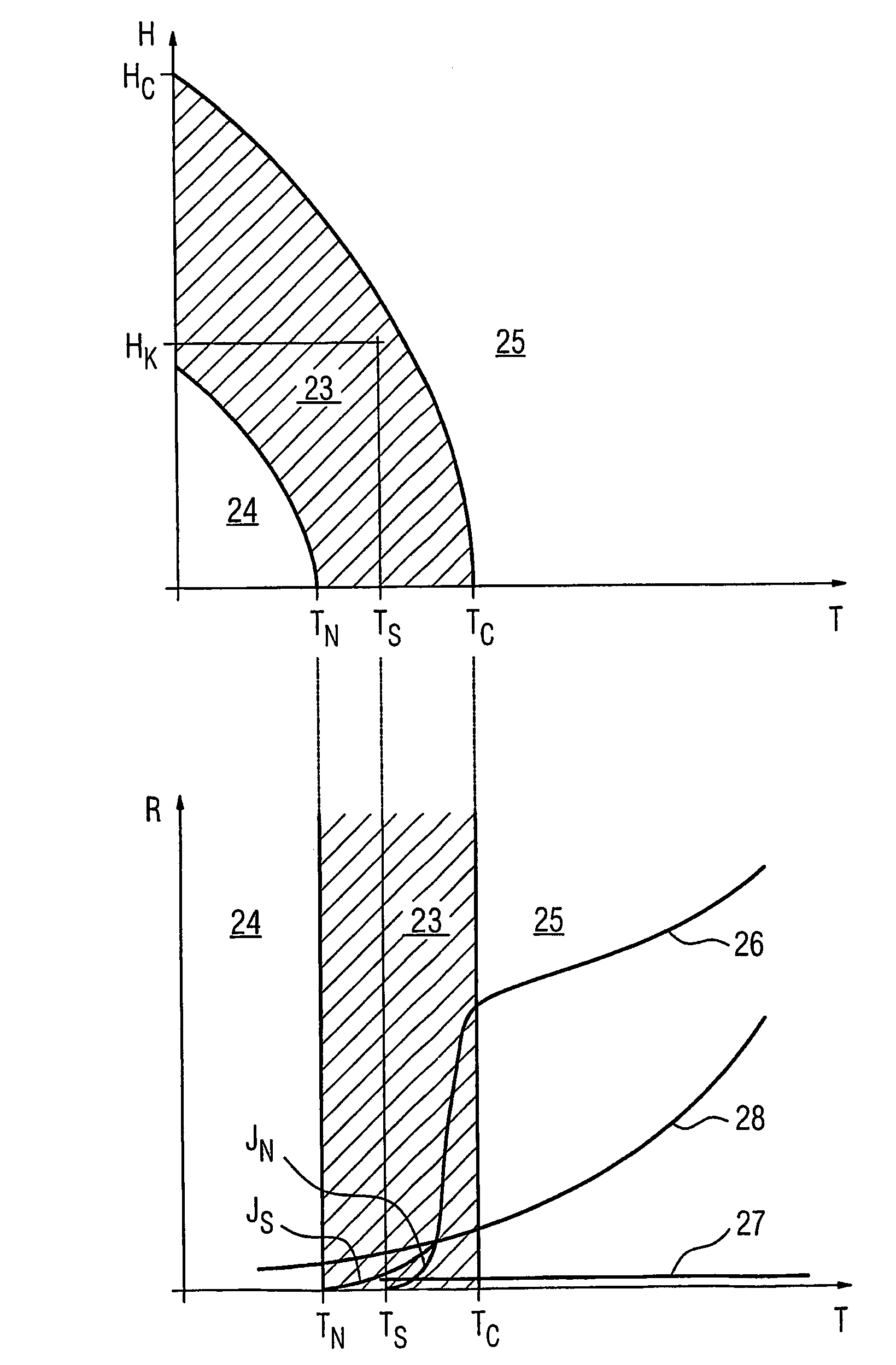Current-limiting device having a superconductive switching element
a current-limiting device and switching element technology, applied in the direction of super-conductive switchable devices, electrical equipment, emergency protective arrangement details, etc., can solve the problems of super-conductor heat generation, achieve positive magnetic susceptibility, improve local quenching safety, and resist the effect of increasing resistan
- Summary
- Abstract
- Description
- Claims
- Application Information
AI Technical Summary
Benefits of technology
Problems solved by technology
Method used
Image
Examples
Embodiment Construction
[0021]A current limiting device 11 has two connecting elements 12, by means of which it can be included in an electrical network. The current-limiting device 11 essentially comprises a superconducting switching element 13 and a bypass element 14, which is arranged in parallel with the switching element 13. The switching element 13 is accommodated in a cryostat 15 which, for this purpose, has an insulating container 17 that is filled with liquid nitrogen as the coolant 16. A cold head 18 dissipates the heat from the insulating container. Furthermore, line feeders 19 are provided on the insulating container 17 and allow electrical contact 11 to be made between the switching element 13 and the connecting elements 12 which are located outside the insulating container 17.
[0022]The superconducting switching element 13 is illustrated in the form of a section in FIG. 2. It is composed of a layer composite, with a superconducting layer 20 (for example YBCO) being produced by coating on a com...
PUM
 Login to View More
Login to View More Abstract
Description
Claims
Application Information
 Login to View More
Login to View More - R&D
- Intellectual Property
- Life Sciences
- Materials
- Tech Scout
- Unparalleled Data Quality
- Higher Quality Content
- 60% Fewer Hallucinations
Browse by: Latest US Patents, China's latest patents, Technical Efficacy Thesaurus, Application Domain, Technology Topic, Popular Technical Reports.
© 2025 PatSnap. All rights reserved.Legal|Privacy policy|Modern Slavery Act Transparency Statement|Sitemap|About US| Contact US: help@patsnap.com



